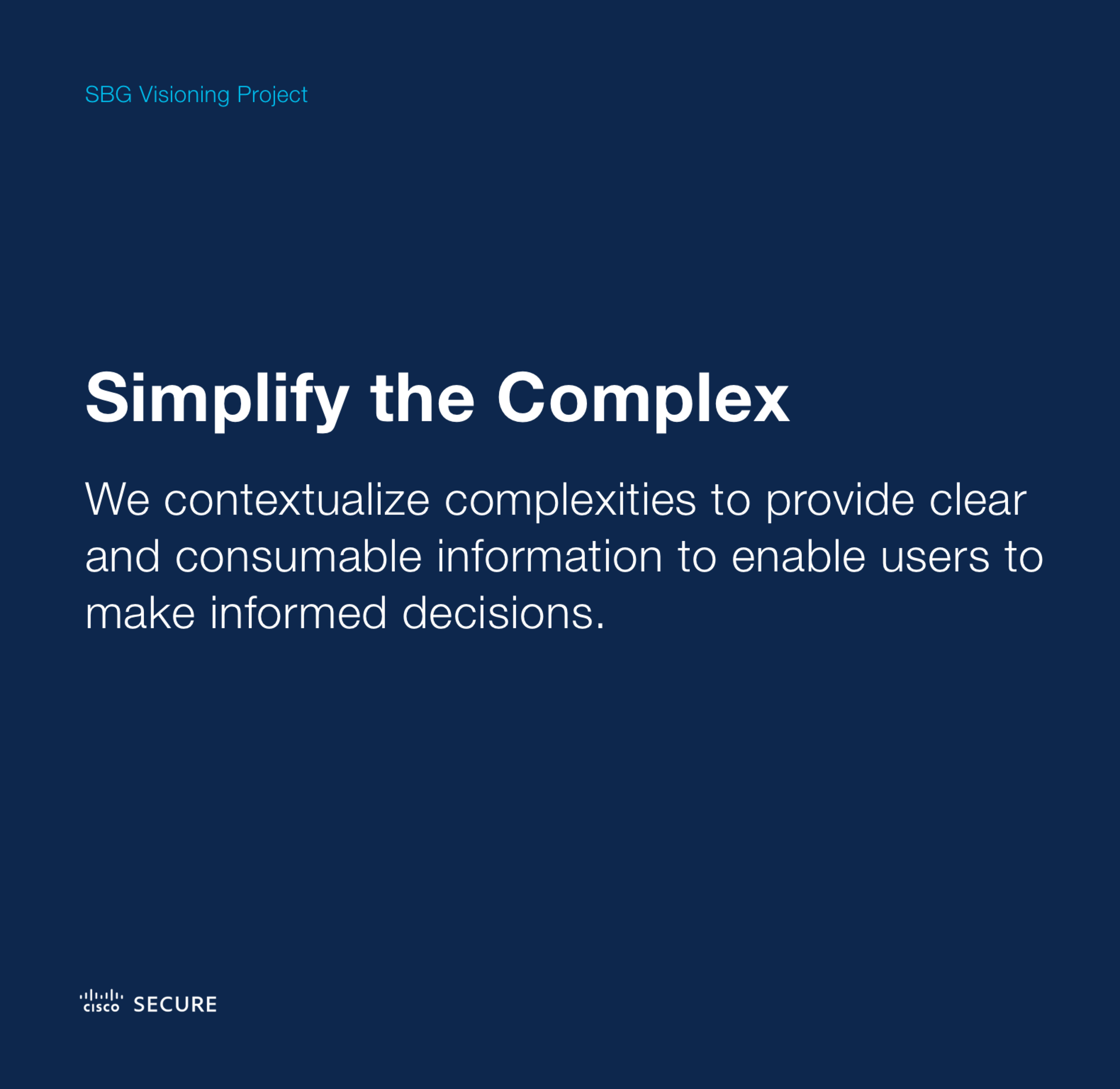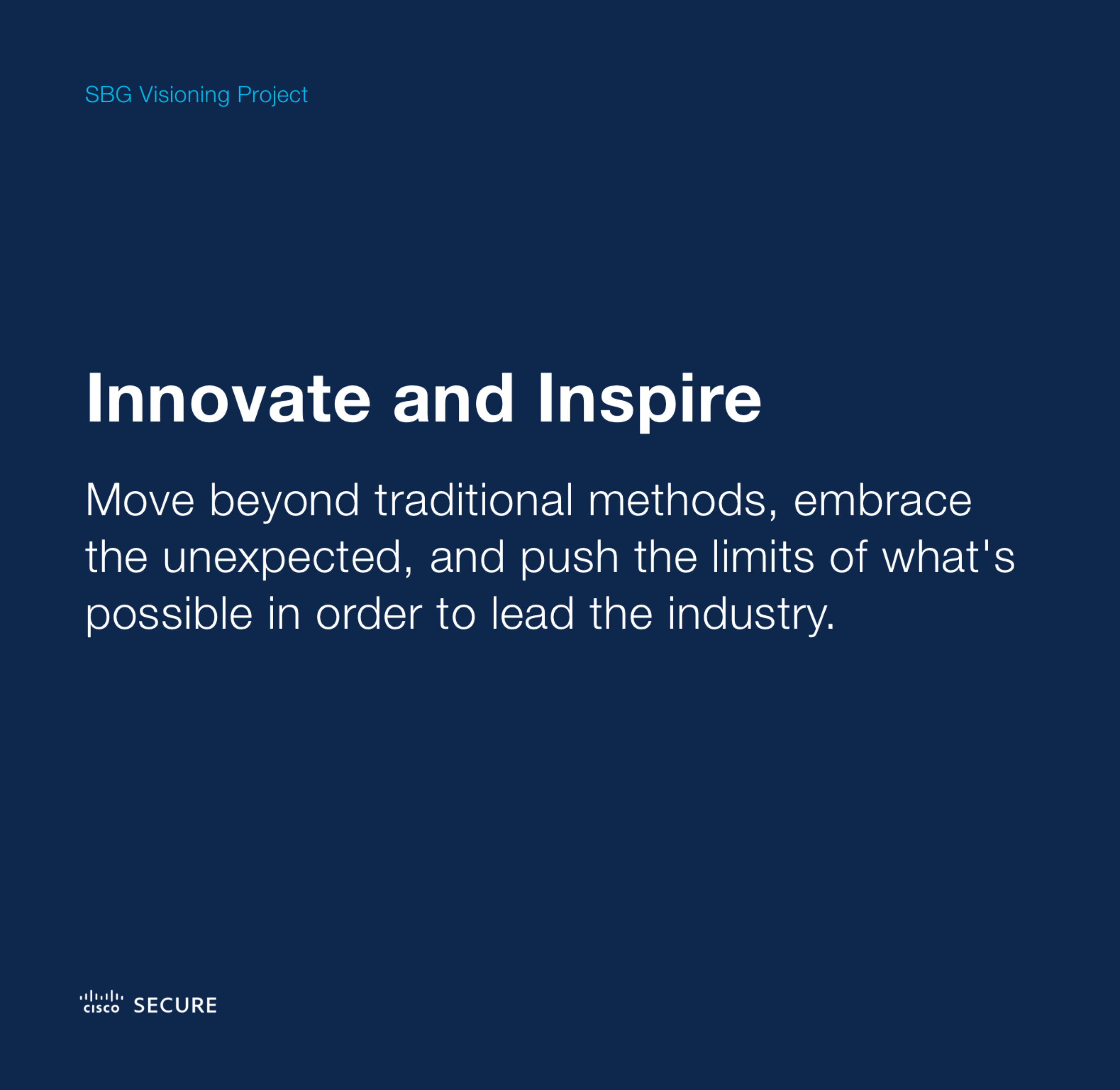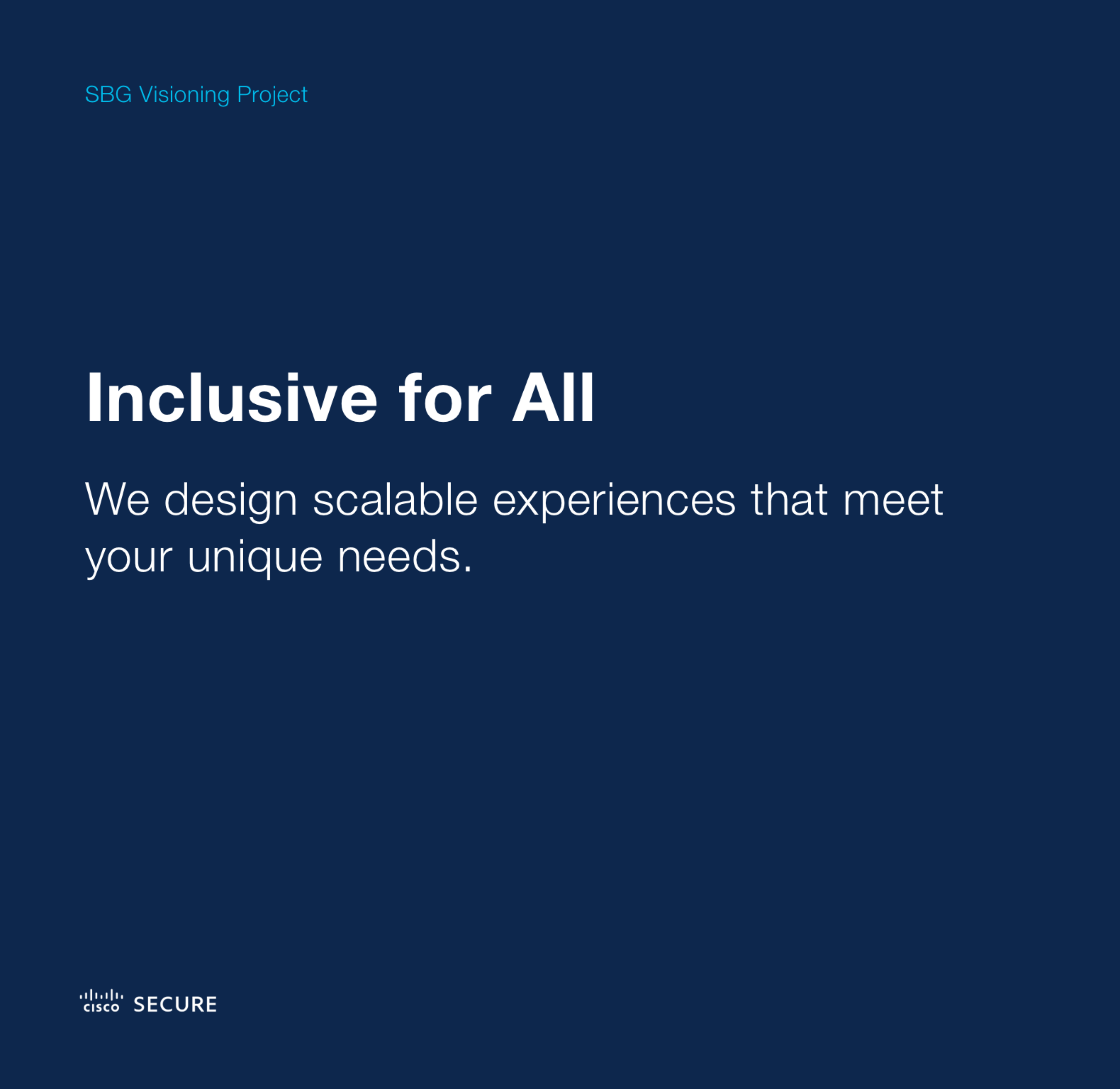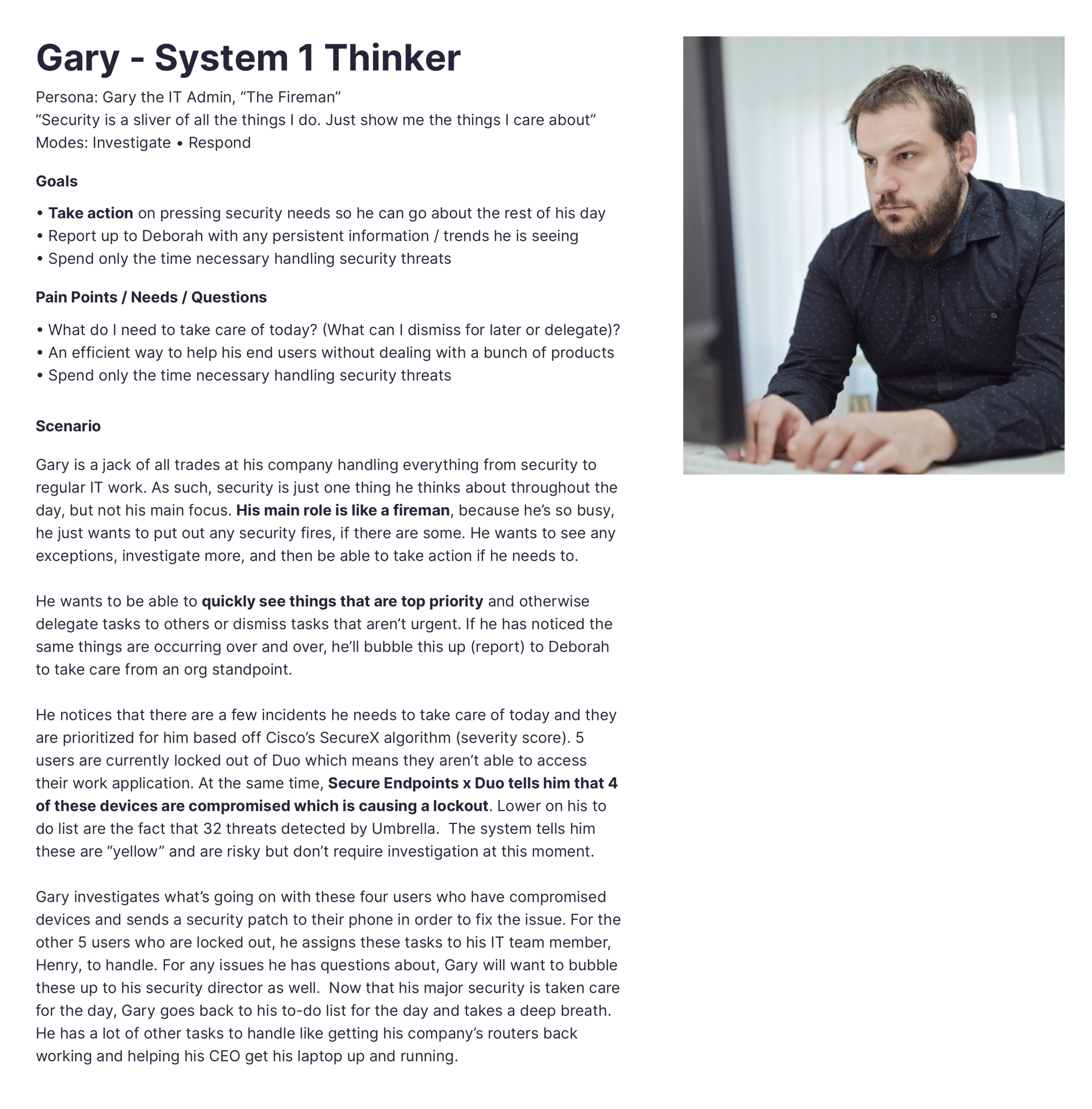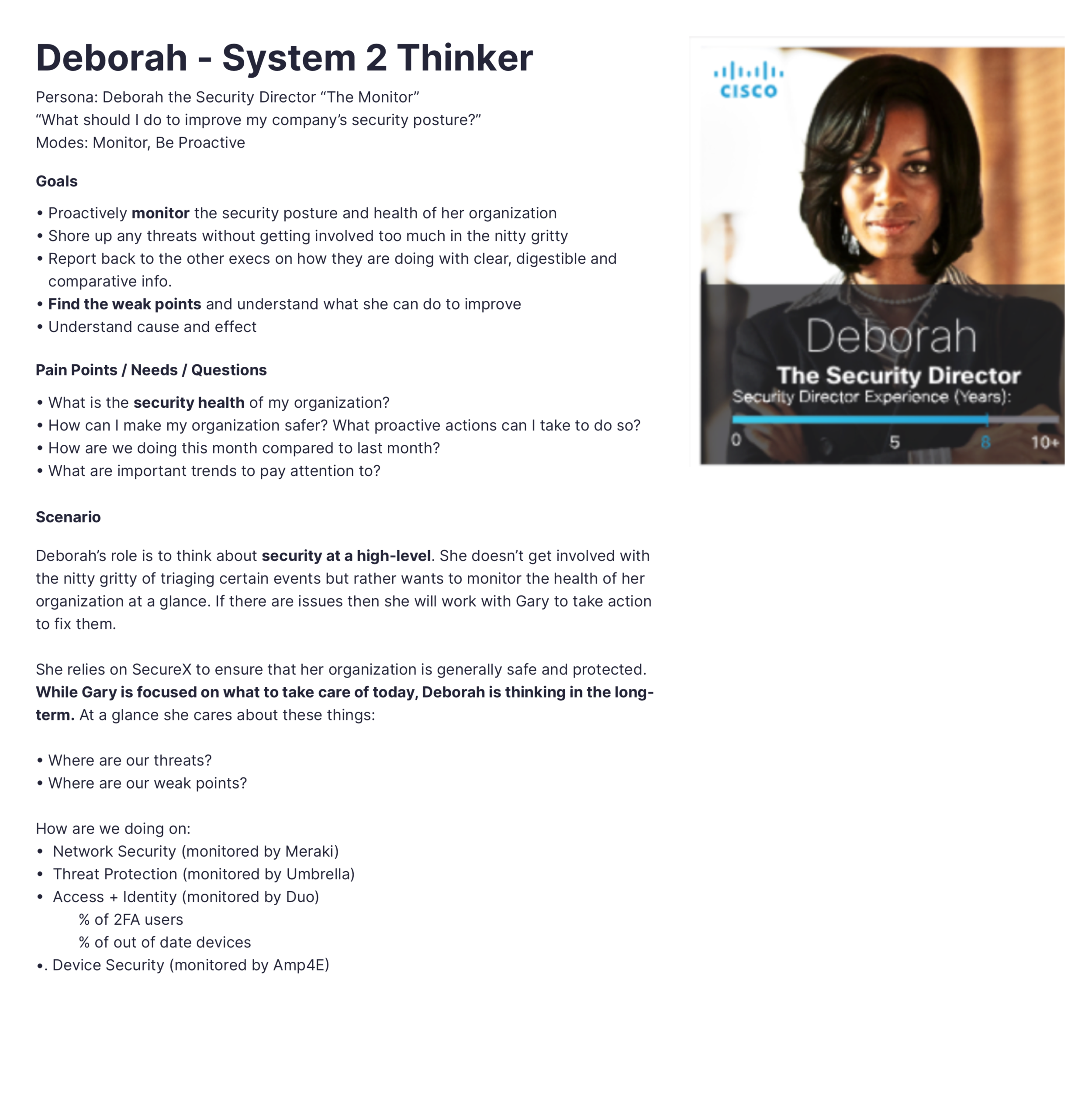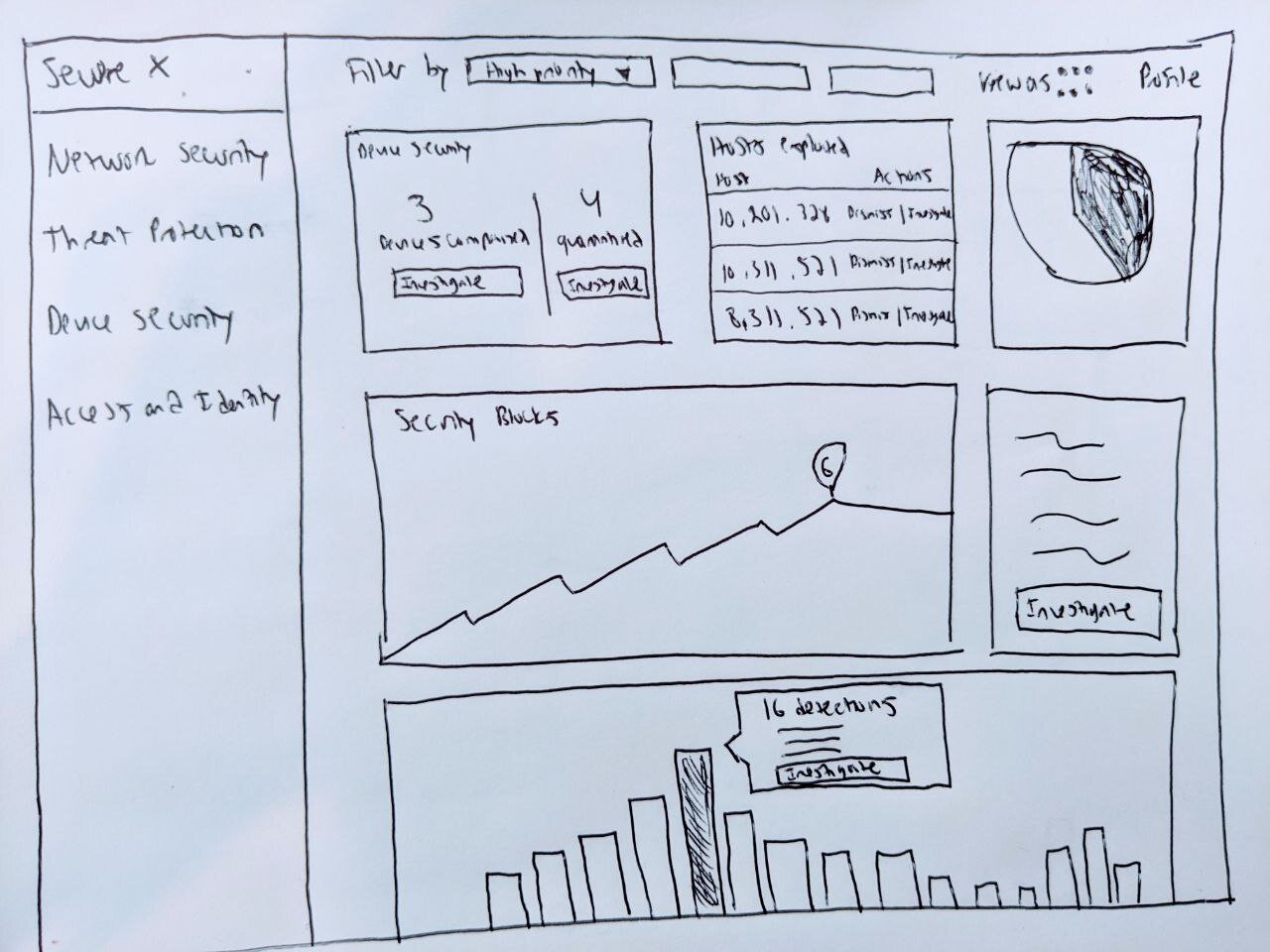Cisco Secure
A design visioning project to unify Cisco’s security products
OVERVIEW
I was selected, along with 5 other designers from across Cisco, to participate in a design visioning project with the goal of generating excitement and inspiration among Cisco’s management for how Cisco’s diverse and disparate set of security products could work together in the future.
ROLE: Product Designer
TEAM: Solo design
TIME: February - April 2021 (8 weeks)
METHODS: Sketching, Design critiquing, Storytelling, Hi-fidelity designs and prototyping
PROJECT MOTIVATION / DESIGN BRIEF
Product design across the Cisco security portfolio lacks a unified user experience. Competing design systems, varying levels of design and engineering resources, and company acquisitions have lead to a disjointed UX. The fragmented, outdated and inconsistent UI results in a lack of trust and confidence from our users.
PROJECT GOALS
Deliver a design concept of how Cisco Secure’s portfolio of 4+ products could be visually integrated in the future, imagining one seamless and cohesive experience.
Re-imagine the current experiences, designing without constraints while focusing on the vision not necessarily the technical specifications. In short, do not allow current paradigms to act as constraints.
MY RESPONSIBILITIES
Note: All aspects of this project were my own, with critique from the other designers and Creative Director along the way.
Craft a cohesive user experience and flow through these 4 products.
Move beyond any current design systems, building my own visual direction from scratch.
Inspire a vision for the future through storytelling, animations, and a modern UI.

